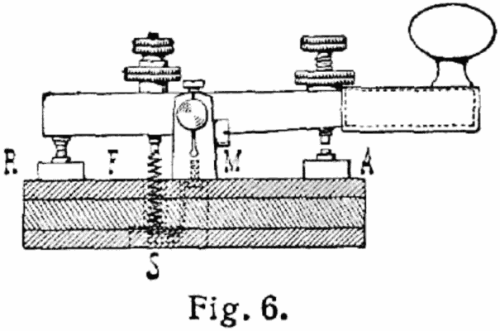CW stands for Continuous Wave. In CW communications, a continuous carrier is transmitted as long as the key contacts are closed. By making and breaking the contacts into specific patterns, characters and entire messages may be sent.
During the earliest days of telegraph, Morse code was the only method for nearly-instant distant communications. Morse code (named for Samuel F. B. Morse) was generated in the clicks made by a sounding bar being attracted to an electromagnet. There was no tone or sound signal present other than a clicking noise. These clicks, and the spaces between them, comprised the code.
The CW tone heard on Amateur Radios today has evolved from the early code first used in 1844. So why, with all the other communication modes available, is CW still used? It’s a multifaceted answer!
For some, CW is just plain fun. The joy of interpreting the sound of Morse code and the challenge of increasing one’s proficiency is very alluring. For DX hunters, code is a robust and reliable form of communication. CW may be understood when voice transmissions fail. This makes it ideal for weak signal DX work. QRP operators capitalize on the ability of CW to “get through.” Other CW users like the historical nature of using a communication method whose development began over 170 years ago. There are many more reasons, we’re sure!
Although many newer devices, like the Unified Microsystems XT-4 Memory Keyer and the MFJ 464 CW Keyer/Reader Unit, and computer interfaces, like the RigExpert TI-8 Digital Mode and Radio Control Interface, may be used to send and/or receive Morse, many still prefer to do it the old fashioned way- with a standard telegraph key. Using your “fist” and your own ears to generate and decode CW is a source of pride and accomplishment.
Regardless of its age, Morse code (CW) has shown a propensity for longevity and, most likely, will still be in use another 170 years from now!



Pingback: CW Operators Club Overview - Ham Radio News